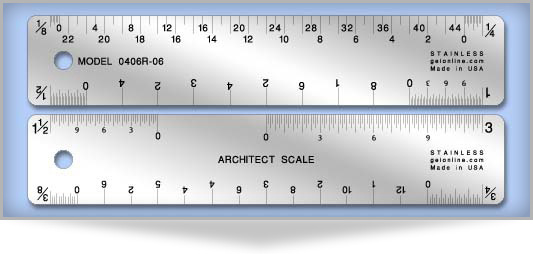
1: 50 – 1:200, the elements in the drawing actually get smaller. As the numbers in the scale get bigger, i.e. The numbers represent centimeters, and the lines between the numbers represent millimeters.Īlso, how do you use a 1 50 scale? You could also say, 1 unit in the drawing is equal to 10 units in real life. In the metric system, each unit of measurement is divided into ten smaller units of measurement. When using a ruler to measure in metric units, choose the side of the ruler that measures in centimeters (cm). Or to use a ruler and measure objects around the house.Consequently, how do you use a metric ruler?

It can be fun to use one object like string to measure another object. How many inches (or fraction of an inch) is 5 x 1/8th? Count it out on your ruler, starting at 1/8.

Let's say you have 5 spaces between "teeth" and one space is 1/8th inch wide. Count how many spaces are in your comb (a comb may be small, medium or large so yours may be different than someone else's). Or, measure the space between the "teeth" of a comb (which is very small). Look at your ruler to count it off in increments. Use the number you get and multiply that number by 2 (for 2 pinkie fingers). Measure the length of your fingernail on your pinkie finger (it should be less than 1-inch on a child). Next, hold the string from your nose to fingertips with your hand stretched in front of your body- is it the same "measurement"? longer? shorter? Try the same experiment with a little brother or sister (string not safe to mess with around very young children or babies!), or "measure" your mom or dad.Įvery ruler is marked in increments, usually with fractions of "inches" or "centimeters" (or both). On an adult, it should equal 3 rulers, or 36 inches (3 x 12"=36-inches) or 3-feet, or 1 yardstick (36" or 3 feet). How many rulers would the length of string "fit". Use a string to "measure" from your nose to fingertip stretched out to your side. People who use knitting yarn also use their arms to do rough measurements.Ĭontractors or other professions know the standard lengths of materials they use (example: the length of a shingle) and sometimes will use string to measure the length x width of a roof, approximately, to roughly figure how many packs of shingles they need to buy.īutchers used to measure string to wrap meat packages by the length of their arm from shoulder to fingertip. Seamstresses know, for example, that if you hold the corner of material in one hand, stretched out away from your side, and touch your nose with the other side of the material, then the material held between your fingers and nose equals about 3 feet (or one yard). Other ways to imprecisely measure (with no numbers) and repeat until you have the approximate length or width is to use: If you wanted to put numbers to the length and width, you'd have to know how long the single paper is, and multiply by the number of times you used the paper. This is imprecise measuring but it gives a rough idea. You could take a piece of paper and "measure" how many times the paper (with no markings) will fit the length of your desk, then use the paper the same number of times along the wall where the desk will sit. Let's say you want to move your desk to the corner of a room, but you don't have an instrument with pre-marked lines.

make linear measurements like length, width, and height.

Tape measures come in a wide variety of lengths. You can think of tape measures as a special kind of ruler. In the US they are typically one foot in length or 3 feet in length (yardstick). Rulers are thin slats marked out in English or Metric units of measure.


 0 kommentar(er)
0 kommentar(er)
